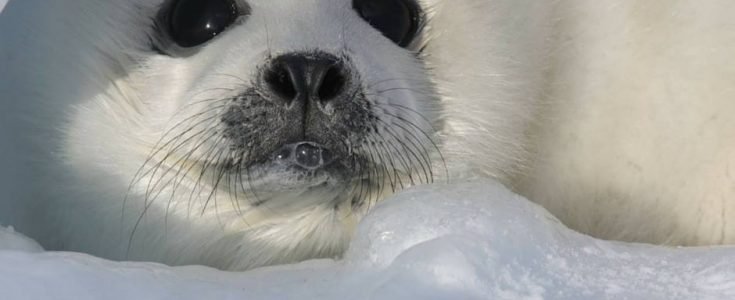It is known around the world as one of the most shocking scenes of bloodshed, a painful reminder of the bloody impact of the fur industry, but the Canadian seal hunt has seen a huge drop in the number of seals killed with the majority of the commercial hunt being closed. This is due to the impact of Covid-19.
According to preliminary figures on the website of Canada’s Department for Fisheries and Oceans (DFO), only 388 seals have been reported killed to date in this year’s hunt in the province of Newfoundland and Labrador, which would usually run from mid-April through late May. In all of 2019, the number of seals killed numbered 32,071. While still a significant number, this was only 8% of the 2019 quota of 400,000. This year’s numbers represent an even greater overall reduction.
According to animal protection group IFAW, DFO officials confirmed that a commercial hunt of both grey and adult harp seals took place in Canada this year in the Gulf of St Lawrence. However, due to the figures being extremely low, they are not being revealed for privacy reasons and are merely described as ‘minimal’. In the province of Newfoundland and Labrador, where the majority of the commercial sealing usually takes place, the commercial seal hunt is not currently open. As harp seals and their pups migrate northwards to Arctic feeding grounds, the likelihood of a significant commercial hunt in Newfoundland remains low.
The seals are killed primarily for their pelts, for use in both the fur and oil industries. Sadly, they are struck using a traditional club called a hakapik, or shot from boats.
Respect for Animals has a long track record of campaigning against the seal hunt, for many years travelling to the front line of the hunt in order to document to horror. One of our greatest achievements was the European Union ban on imports from the commercial seal hunt, with millions fewer seals being killed as a result of the collapse in demand.
In the mid-2000s, seal hunters regularly killed around 330,000 seals a year. These figures dropped steeply however after the successful campaign for a European Union ban on the trade in seal products, which was passed in 2009. With a significantly reduced market for the seal skins, many seal hunters stopped taking part in the hunt.
With the ten-year anniversary of the ban, it was found that the number of seals killed in the decade since the EU trade ban had dropped by 91%, saving over four million seals pups from this cruel and unnecessary death.
In the last few years, the alarming impact of climate change on the seals’ ice breeding habitat has added further urgency among the international community to calls for the hunt to end.





